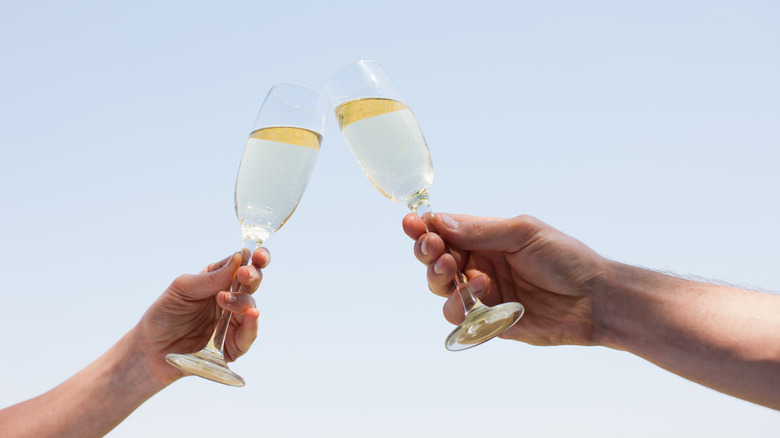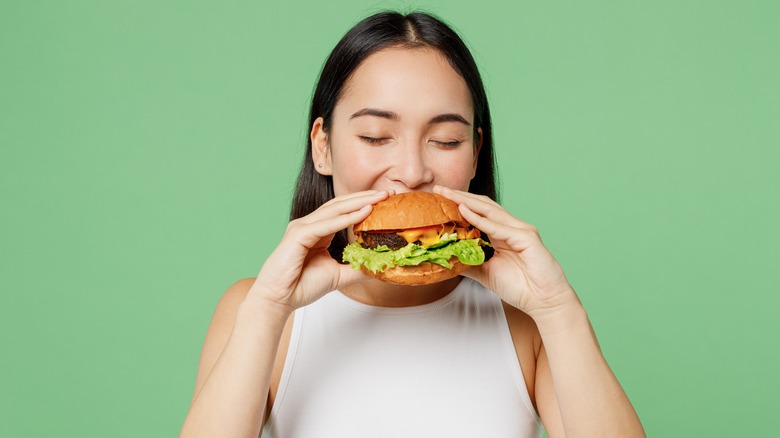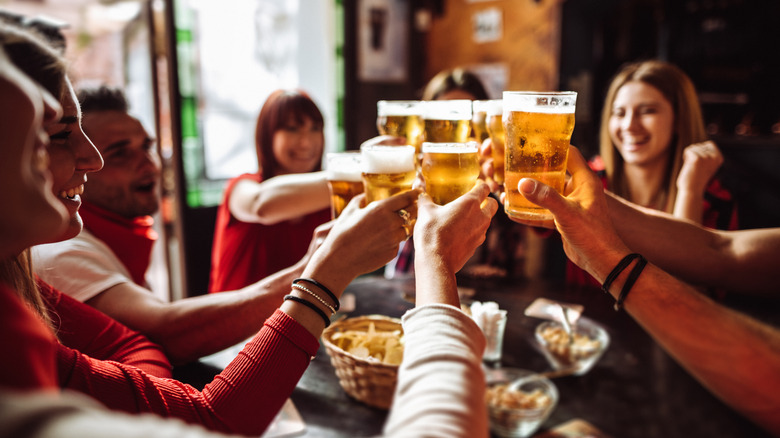The Bizarre Drink-Holding Etiquette Everyone Followed In The 1960s
To little surprise, society has always had some sort of etiquette regarding fine dining. Just as we have napkin etiquette rules today, etiquette in the 1960s addressed behaviors as seemingly insignificant as which hand you used to hold your glass.
Whether you were a lefty or a righty, etiquette of the time dictated that diners and party-goers use their left hand to hold a drink. After all, the right hand was your "social hand," to be available for shaking others' hands at all times. In other words, you couldn't hold your bag or help yourself to an appetizer with your right hand, and you certainly couldn't muffle a sneeze with your right hand! We stand by that last one.
Of course, this habit is still encouraged today, particularly at weddings, business meetings, and other formal events. And sure, you could switch your drink back and forth as necessary, but you might then offer someone a wet handshake -– and no one wants that. Do everyone a favor and keep your drink in your left hand at social gatherings.
We could learn a thing or two about a full mouth from 1960s etiquette
Although some etiquette rules from the 1960s are arguably outdated, many of them are actually still applicable today. For instance, we could all benefit from the social rules surrounding a mouthful of food. In the simplest of terms, don't do it, and don't open your mouth to speak while your mouth is full. No one wants to see your chewed-up food.
Instead, you should only have one forkful of food in your mouth at a time, and a manageable forkful at that. What's more, you should only be cutting meat a bite or two at a time, as opposed to cutting up your entire steak in one go. Keeping bites small and spaced out helps you eat more slowly, whereas stuffing food into your mouth at warp speed might make you look a bit ridiculous to your dinner companions. This also comes with the perks of feeling fuller and a reduced risk of choking on your dinner.
Per 1960s etiquette, you should always have a toast ready
Today, toasts may not be quite as commonplace as they were in decades past, but that doesn't make them any less thoughtful. In the 1960s, for instance, you were expected to have a toast ready to go at any moment, whether you were the host or a guest.
Regardless of the year, the host will typically lead a toast, thanking their guests for coming. Alternatively, if a guest starts the toast, they should thank the host for organizing the event. Either way, if you find yourself having to give a toast, you should first stand and politely catch everyone's attention. Keep your toast short and sweet, as well as relevant to the event.
While glass-clinking historically started as medieval poison control, there's really no longer a need to clink glasses after a toast. You can still do so if you'd like, but your host will probably appreciate you not scratching, chipping, or breaking their glasses in the process.



